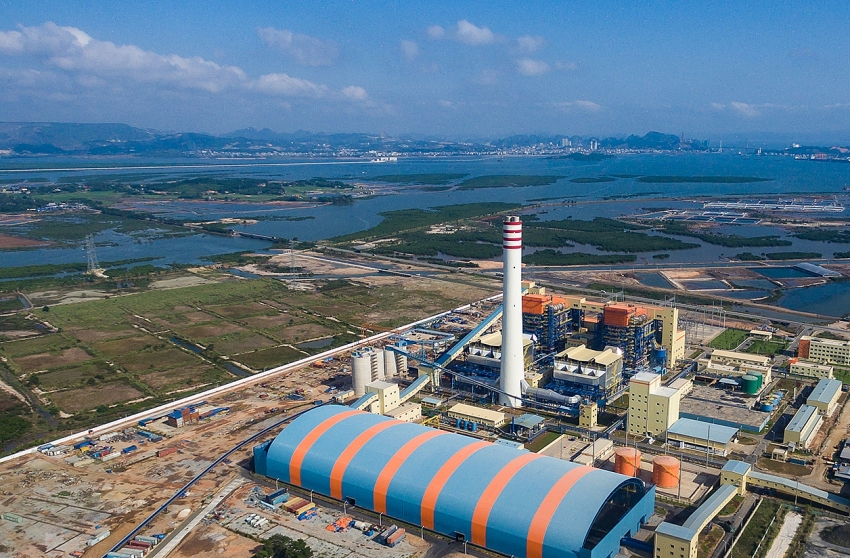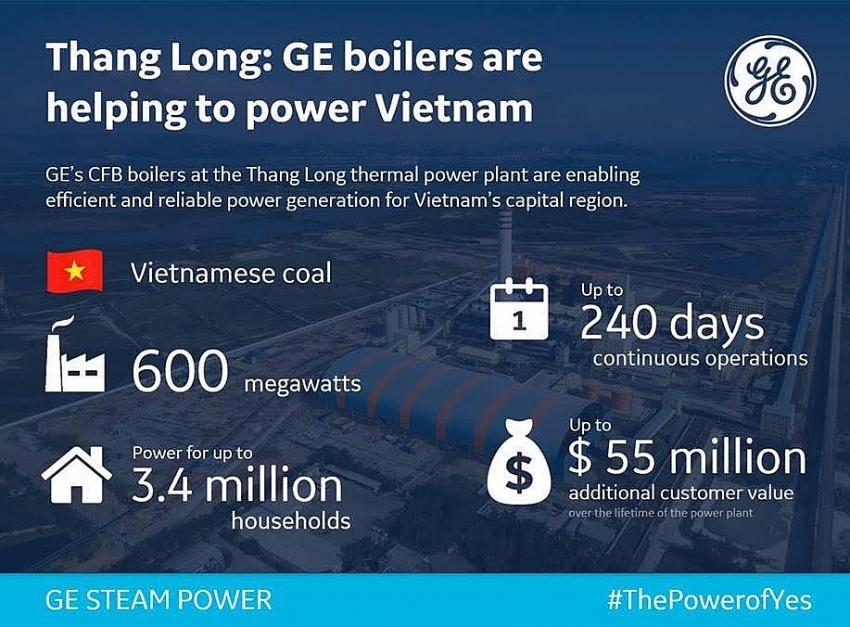New thermal power plant helps soothe Vietnam’s thirst for electricity
 |
| New thermal power plant helps soothe Vietnam’s thirst for electricity |
In Vietnam, hydropower represents 35 per cent of installed electricity capacity. That’s great for maintaining a low tariff, but it brings challenges for a stable power supply at the end of the dry season when large quantities or the water generating capacity are depleted and there’s no rain to refill them.
Compounding this seasonal challenge is a speedy economy growth that’s expanding at a 10-year-average rate of more than 6 per cent a year, creating electricity demand growth at an even faster 11 per cent annual rate. The result? Vietnam is finding it increasingly difficult to ensure reliable power during the end of the dry season and into the early months of the rainy season.
Helping to fill the gap is the country’s first large-scale independent power producer (IPP) project namely the 600-megawatt Thang Long thermal power plant. Located about 70 miles (113 kilometers) north east of Hanoi, the plant uses local Vietnamese coal to generate electricity sufficient to meet the need of 3.4 million Vietnamese households.
Significantly, Thang Long is doing this work efficiently and reliably, thanks to a pair of 300-MW circulating fluidised bed boilers from GE Steam Power. Nearly one year after commercial operations began at Unit 1 (May 2018) and Unit 2 (July 2018), the results have far exceeded expectations.
“The customer has been satisfied by the performance of the boilers during their first year of operation,” says Mylan Nguyen, country executive of Steam Power in Vietnam. “From achieving commercial operation ahead of schedule, to delivering significantly higher boiler efficiencies than contracted and to providing superior availability, GE technology is helping Thang Long operate efficiently and cost effectively.”
 |
Unit 1’s commercial operation date (COD) was May 16, 2018 - two weeks ahead of schedule, while Unit 2 came online July 29, 2018 - two months early. While recognising the central role of the owner and EPC contractor, My Lan said, “As the technology package sitting on the critical path of the execution, GE boilers played a critical role in achieving these early COD dates.”
For the plant owner, Thang Long Thermal Power Joint Stock Company – Geleximco, early delivery meant it was able to begin generating revenue sooner. But more significantly, the early delivery meant the plant was able to add 600 MW of capacity just when Vietnam’s power grid needed it most – at the tail end of the dry season.
What’s more, during the year since, GE’s boilers have continued to deliver additional benefits. While the contract guaranteed boiler efficiency of 88.4 per cent HHV (higher heating value), Unit 1 performed at a rate of 90.248 per cent, while Unit 2 performed at 89.908 per cent.
That translates into millions of dollars in additional value to the owner, given that every 1 per cent increase in boiler efficiency per unit over 25 years yields $17 million in net present value. Assuming the efficiency of the boiler units remain at the same level over 25 years, with the Unit 1 boiler delivering efficiency 1.8 per cent above its guarantee, and Unit 2 exceeding the guarantee by 1.5 per cent, the total additional value is $55 million.
Vu Van Tien, chairman of Geleximco Group, said, “A reliable supply of electricity is critical to Vietnam’s ongoing economic development and to improving the daily life of its people. As the first large IPP project in Vietnam, Thang Long is demonstrating the value that public-private partnership and private investment can bring to Vietnam’s electricity sector and ensuring a balance between electricity supply and demand.”
The boilers performed above its guarantees in several other ways, including in their post-COD availability, which means the boilers were in nonstop service more than the 150 days of the best practice. Unit 2 operated 196 continuous days after its start of commercial operations, while Unit 1 went a remarkable 240 days. As a result, the plant was able to deliver more power to the grid.
Environmental benefits of the GE technology include the use of circulating fluidised bed (CFB) combustion, which leads to lower emissions from the plant. In fact, GE’s CFB boilers are enabling lower SO2 and lower NOx emissions than the standard that Geleximco had committed to, helping to reach levels way below Vietnam’s official regulations.
Thang Long shows that with the right technology and the right partners, coal-fired IPP projects can deliver the reliable and efficient electricity that Vietnam needs to fuel its future.
What the stars mean:
★ Poor ★ ★ Promising ★★★ Good ★★★★ Very good ★★★★★ Exceptional
Related Contents
Latest News
More News
- Addressing Vietnam's energy challenges with aeroderivative gas turbines (February 28, 2023 | 09:33)
- How to sprint ahead in 2023’s worldwide energy priorities (February 08, 2023 | 13:55)
- Boosting Vietnam's grid stability through gas turbine technology (November 22, 2022 | 20:02)
- Healthcare trio collaborates to provide thousands of free breast scans (October 27, 2022 | 17:19)
- GE Healthcare's vision for AI-backed radiology (September 29, 2022 | 11:53)
- GE brand trio to shape the future of key industries (July 19, 2022 | 15:35)
- GE unveiling brand names and defining future (July 19, 2022 | 15:16)
- GE: the shortest route towards sustainability (July 18, 2022 | 08:00)
- Be proactive in an uncertain world (May 20, 2022 | 11:40)
- GE secures first 9HA combined cycle power plant order in Vietnam (May 16, 2022 | 17:06)

 Tag:
Tag:

























 Mobile Version
Mobile Version